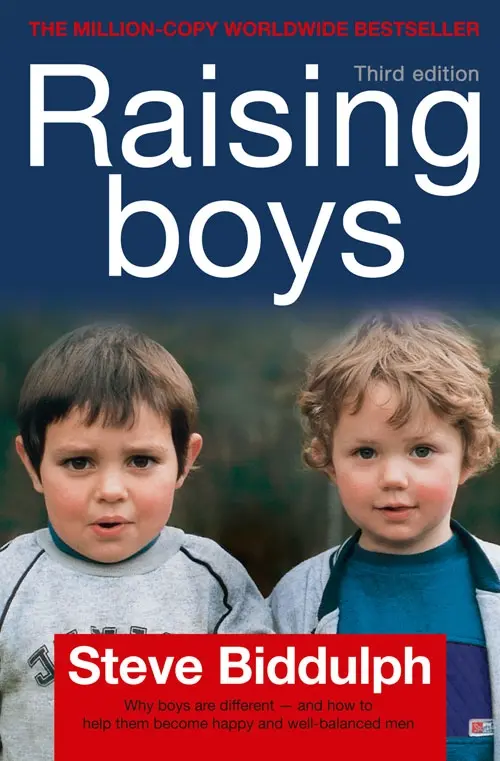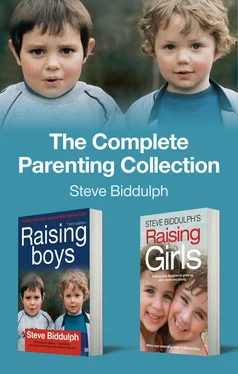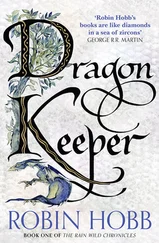The Complete Parenting
Collection
Steve Biddulph
Raising Boys
and
Steve Biddulph’s Raising Girls

Cover
Title Page The Complete Parenting Collection Steve Biddulph Raising Boys and Steve Biddulph’s Raising Girls
Raising Boys
Steve Biddulph’s Raising Girls
Also by Steve Biddulph
Copyright
About the Publisher

Why boys are different – and how to help thembecome happy and well-balanced men
Third edition
Illustrations by Paul Stanish

Title Page Raising boys Why boys are different – and how to help thembecome happy and well-balanced men Third edition
Preface to the new edition Preface to the new edition As the twentieth century drew to a close, it was looking bad for boys. Mothers in the labour ward, when told, ‘It’ s a boy!’, groaned ‘Oh no …’ Girls in the 1990s were on the move, going places, focussed and confident, but boys were somehow all wrong – too noisy, too energetic, unmotivated at school, dangerous to themselves and others. And then they turned into – men! But those of us who worked with families – or who had boys of our own and loved them dearly – knew this wasn’t right. Two vital truths needed to be remembered: that boys were different, in small but important ways; and that by understanding their psychology, the stages of their development, their hormones and their hard-wired nature, we could raise them to be fine young men – safe, caring, passionate and purposeful. This book you hold in your hands was the first, worldwide, of a slew of boy books, and it helped the world to turn a corner. It was a bestseller in Australia, the UK, Germany, Japan, Brazil and fifteen other countries; but more than that, it was loved, kept by the bedside, dog-eared and much visited. People urged their friends to read it. Women nudged their husbands in bed and said, ‘Listen to this …’ Boys have real dangers in their lives. They are three times more likely than girls to die before the age of 21, and five times more likely to have problems at school. Millions of boys have lessened chances in life because we have failed to understand and love them. But all across the globe things are changing. Recent research has demonstrated that boys have turned around and are now less at risk than ten years ago. We are getting better at raising them. With this new realisation of boys’ needs – for exercise, for warm relationships with mothers, for fathers and other good men in their lives to be active and engaged, for schools that know how to teach in boy-friendly ways – we can now go much further. We can raise a generation of boys that are happier, more alive, more connected to the human race, just in time for a world that so badly needs good men. Boys are fun. They make you laugh. They are full of life, and can share that energy with you. They speak from the heart and are forgiving. So I have tried to put all those qualities into this book. Whether your son is a tiny baby, a young schoolboy, or a teenager surging with hormones and hopes, this book is for you. I hope you like it. And I hope that if, one day, your daughter has a baby son, she will say, ‘Wow, that’s fantastic!’ Steve Biddulph Tasmania, 2008 www.stevebiddulph.com
1 What is it with boys? Chapter 1 What is it with boys? Last night I drove into town for a meeting, or at least tried to, and the situation with young men was once again thrust into my face. Three cars ahead of me, the Pacific Highway was blocked. A car driven by a teenage boy, with four friends as passengers, had attempted to pull out into the traffic, but miscalculated. A truck coming up behind had hit the car and carried it 50 metres along the road, badly crushing it in the impact. Soon the emergency vehicles arrived: fire, police, ambulance. Men worked in teams, calmly but rapidly dealing with the situation. The young driver was gradually cut out of the wreck unconscious. His four male passengers had varying injuries, some serious. An older woman, perhaps the mother of one of the boys, came running from a nearby farm. A policeman gently comforted her. Maleness was everywhere – inexperience and risk on the one side; competence, caring and steadiness on the other. It kind of summed up for me the male situation. Men, when they turn out well, are wonderful – selfless, heroic, hardworking. But being young and male is so vulnerable, so prone to disaster. When we see a boy born these days, we can’t help wondering – how will he turn out?
2 The three stages of boyhood
3 Testosterone!
4 How boys’ and girls’ brains differ
5 What dads can do
6 Mothers and sons
7 Developing a healthy sexuality
8 A revolution in schooling
9 Boys and sport
10 A community challenge
About the Author
Author’s notes
Copyright
About the Publisher
Preface to the new edition
As the twentieth century drew to a close, it was looking bad for boys. Mothers in the labour ward, when told, ‘It’ s a boy!’, groaned ‘Oh no …’
Girls in the 1990s were on the move, going places, focussed and confident, but boys were somehow all wrong – too noisy, too energetic, unmotivated at school, dangerous to themselves and others. And then they turned into – men!
But those of us who worked with families – or who had boys of our own and loved them dearly – knew this wasn’t right. Two vital truths needed to be remembered: that boys were different, in small but important ways; and that by understanding their psychology, the stages of their development, their hormones and their hard-wired nature, we could raise them to be fine young men – safe, caring, passionate and purposeful.
This book you hold in your hands was the first, worldwide, of a slew of boy books, and it helped the world to turn a corner. It was a bestseller in Australia, the UK, Germany, Japan, Brazil and fifteen other countries; but more than that, it was loved, kept by the bedside, dog-eared and much visited. People urged their friends to read it. Women nudged their husbands in bed and said, ‘Listen to this …’
Boys have real dangers in their lives. They are three times more likely than girls to die before the age of 21, and five times more likely to have problems at school. Millions of boys have lessened chances in life because we have failed to understand and love them. But all across the globe things are changing. Recent research has demonstrated that boys have turned around and are now less at risk than ten years ago. We are getting better at raising them.
With this new realisation of boys’ needs – for exercise, for warm relationships with mothers, for fathers and other good men in their lives to be active and engaged, for schools that know how to teach in boy-friendly ways – we can now go much further. We can raise a generation of boys that are happier, more alive, more connected to the human race, just in time for a world that so badly needs good men.
Читать дальше














